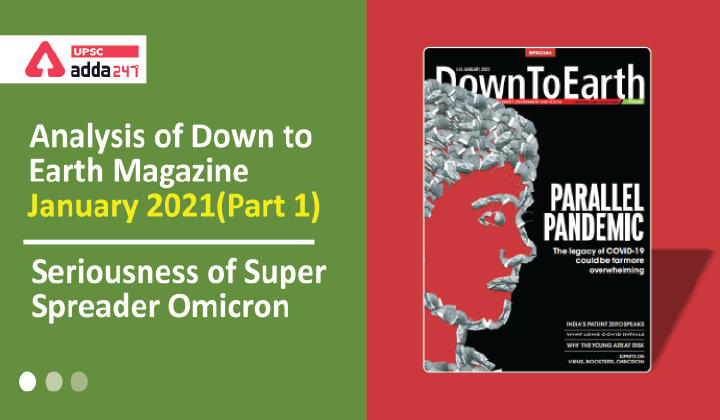Table of Contents
Context
As India and World is facing the Omicron attack which is a super spreader variant of Covid-19, many experts worldwide are warning that even a less severe Omicron can causeserious damage worldwide, in terms of health system and economy.
Has it been difficult to understand the virus’ behaviour and predict its variants?
- The virus that causes COVID-19 is constantly changing, and new variants of the virus are expected to occur. Sometimes new variants emerge and disappear. Other times, new variants persist. Numerous variants of the virus that causes COVID-19 are being tracked globally during this pandemic.
- The talk about variation in the virus due to immune pressure began a long ago and the scientific community was aware this could happen and vaccines might require boosters.
- The fact is that epidemics come in multiple waves that vary by location. There might also be populations and seasons acting as drivers, and this had been discussed right from the beginning of the pandemic. The likelihood of a variant coming from a place that had low surveillance or more immune-compromised individuals was also predicted.
How Variants Change with spread of the virus?
- As the virus spreads, it has new opportunities to change and may become more difficult to stop.
- These changes can be monitored by comparing differences in physical traits (such as resistance to treatment) or changes in genetic code (mutations) from one variant to another.
Is Omicron a severe variant?
- It does not seem that Omicron will be worse than the other variants; it may be as or less severe than Delta.
- If it was more severe, we would have started to see deaths in a younger age group by now.
- But even if it is less severe, that does not mean that nobody will ever die. It just means that deaths will occur at a very low rate. But if there are more infections, a low rate of deaths may also be significant.
Will Omicron trigger another wave in the country?
- We will have to wait and watch. India has an advantage; a large part of the population was infected before being vaccinated, which provides protection. However, we have not administered booster shots.
- Moreover, as per reports coming in from the UK, even two doses of Astra Zeneca do not provide enough protection against Omicron. In such a case, a large number of people will be infected or re-infected. A small proportion of the infected will develop severe.
- Flattening the curve has been the mantra to fight the pandemic.The purpose of flattening the curve is to spread out the cases so that the health system can handle the load.
- Now, if the health system improves over time, then the curve does not need to be as flat as it was in the beginning. If we take a look at the second wave (April-June 2021), the experience in northern India was by and large different from southern India. This is because the latter has better healthcare systems.
- It is not as though the sero-surveillance data or case numbers show less infection in southern states; if anything, Karnataka and Kerala had more. But these states did not see similar fates as Delhi during the second wave.
How will vaccines fare against Omicron?
- If Omicron can dodge neutralizing antibodies, it does not mean that immune responses triggered by vaccination and prior infection will offer no protection against the variant.
- Immunity studies suggest that modest levels of neutralizing antibodies may protect people from severe forms of COVID-19
- Other aspects of the immune system, particularly T cells, may be less affected by Omicron’s mutations than are antibody responses.
When will the COVID-19 pandemic taper off in the country?
- Covid is not something that will go away so soon. We are already started experiencing the third wave of covid-19, along with many new variants. However, proper vaccination is able to maintain basal level of infection.
- How SARS-CoV-2 evolves over the next several months and years will determine what the end of this global crisis looks like — whether the virus morphs into another common cold or into something more threatening such as influenza or worse.
- A global vaccination push that has delivered nearly 8 billion doses is shifting the evolutionary landscape, and it’s not clear how the virus will meet this challenge.
- Meanwhile, as some countries lift restrictions to control viral spread, opportunities increase for SARS-CoV-2 to make significant evolutionary leaps.
- Scientists are searching for ways to predict the virus’s next moves, looking to other pathogens for clues.
- They are tracking the effects of the mutations in the variants that have arisen so far, while watching out for new ones.
- They expect SARS-CoV-2 eventually to evolve more predictably and become like other respiratory viruses — but when this shift will occur, and which infection it might resemble is not clear.



 TSPSC Group 1 Question Paper 2024, Downl...
TSPSC Group 1 Question Paper 2024, Downl...
 TSPSC Group 1 Answer key 2024 Out, Downl...
TSPSC Group 1 Answer key 2024 Out, Downl...
 UPSC Prelims 2024 Question Paper, Downlo...
UPSC Prelims 2024 Question Paper, Downlo...
